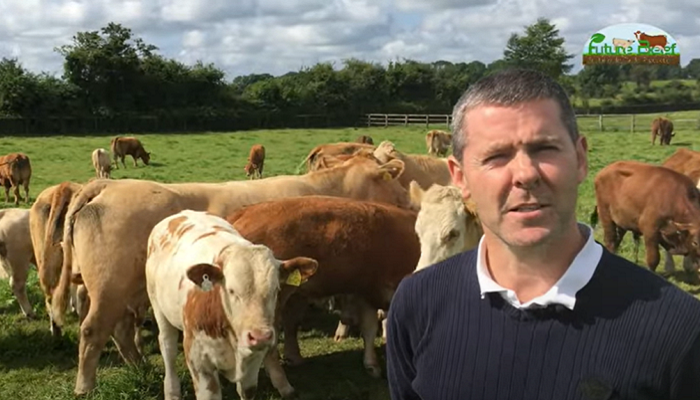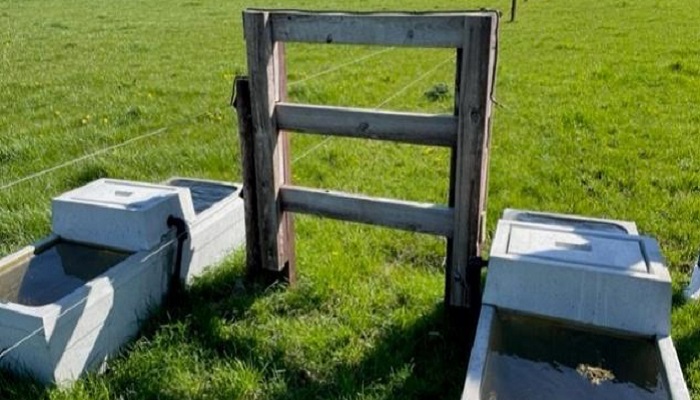04 August 2023
Watch: Putting grass ‘front and centre’ in Co. Meath

Michael McGuigan farms part time with his wife Aisling and daughter Penny at Longwood, Co. Meath. Located all around the farmyard, the 23.5ha farm is a mixture of sandy gravel and clay soil and is home to an autumn-calving suckler herd.
Male progeny from the suckler herd are sold as weanlings; the heifers – if not retained for breeding – are sold for export or in show and sales in the local mart. To make use of the best genetics available, 100% AI is used on the farm.
The grassland edge
Michael took home two awards at the Grassland Farmer of the Year competition final, hosted at Teagasc Moorepark on May 24. He won the Overall Drystock Grassland Farmer of the Year 2022 and also picked up an award for the Best Innovation in grassland.
Michael is only farming six years and has invested his energy and capital into growing and utilising grass to its maximum in that short period of time. To find out why and how it could be done, many farmers attended a farm walk on his farm in Blackwater, just outside Longwood, on a damp July evening recently.
Interestingly, one of the first questions asked on the evening was ‘why’, to which Michael responded: “After taking on the farm, I went to a lot of farm walks and events and I quickly learned that if there was any profit to be made out of farming, grass would have to be front and centre.”
In the below video, Michael highlights how he has improved the grassland management on his farm:
Soil fertility
When Michael bought the farm, it was originally a stud farm in three fields. Soil samples were taken and confirmed what he suspected – the soil fertility was very low in terms of pH, phosphorus (P) and potassium (K). The first step was addressing that issue. Fertilisers with higher levels of P and K, like 18-6-12, were used instead of those containing higher levels of nitrogen (N). Lime was also applied. There were parts of the farm that were so poor, Michael adopted a reseeding programme over five years.
Paddock system
Another key to his success was joining a local grass group facilitated by Grass10 and David Argue of Teagasc. Michael learned from other farmers in the group that to control grass putting in a paddock system was one of the first steps. He began dividing up the farm. He put in additional water troughs and divided the farm with seven permanent divisions using timber stakes and two strands of electric wire. These can be divided further with reels and pigtails. The number of divisions has gone from the original three to 25, meaning a paddock size of 2.2 acres (0.90ha). Having plenty of well-placed water troughs is also key to allowing paddocks to be split. Calves creep graze ahead of the cows from a few weeks of age. The creep gate being utilised on the farm to facilitate this is pictured below.

Grass measuring
Another vital tool to control grass is walking the whole farm on a weekly basis from February to November. Michael is measuring grass and using PastureBase Ireland to help him make the correct management decisions. For the year to date, Michael has completed 25 grass walks.
When asked at the farm walk about the time it takes to walk the farm every week in order to manage grass and move stock every two days, he replied: “Moving stock takes only five minutes and the time walking the farm every week is the most important hour of my farming week.”
The focus on grassland management and the ensuing investment since Michael commenced farming is delivering. The farm grow over 11t DM/ha in 2022 – almost twice that grown on the average drystock farm.
Michael McGuigan is a participant in Teagasc’s Future Beef Programme. For more information on his farm, including current levels of grassland performance, preparation for weaning and animal performance, click here. This article first appeared in the Future Beef newsletter. Sign up to the Future Beef newsletter here.
